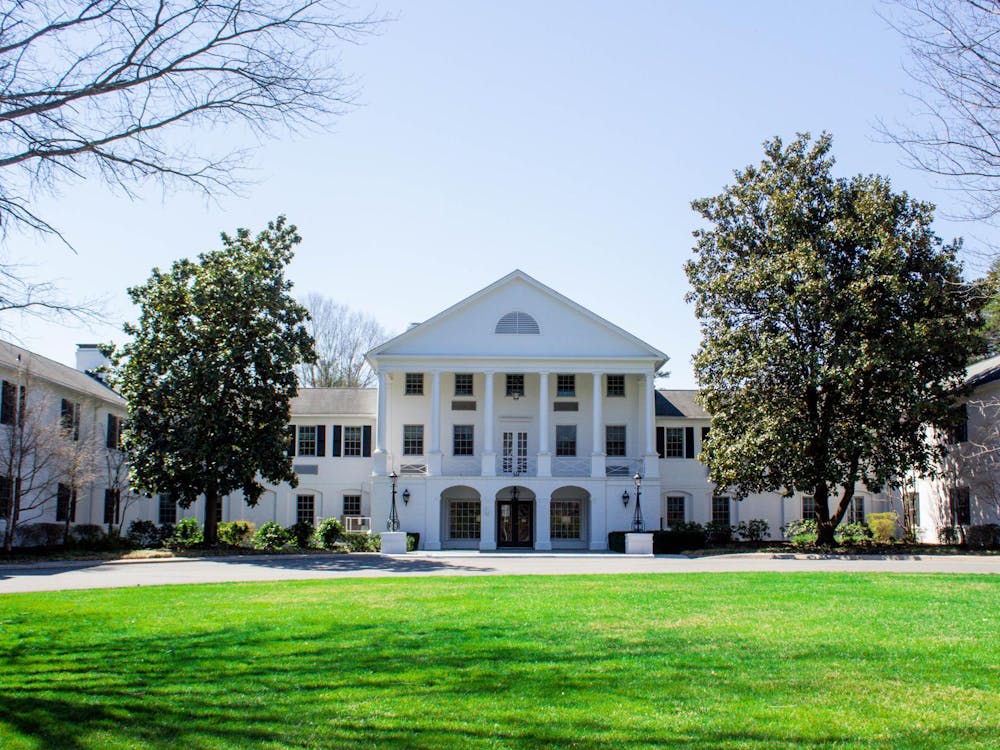I WILL always have Dobie pride. My calves will always be stronger from marching up that hill multiple times a day. I still insist my friends refer to me as their Intramural Coordinator. I loved Dobie, and I loved new dorms.
When I applied for housing in the summer before my first year, though, I had no idea about the differences between the dorms. I knew the Alderman dorms had bigger rooms and a suite area, and that was enough to persuade me to check the box sealing my first-year destiny. However, I quickly learned the differences between old and new dorms were more profound than their architectures. Minorities last year made up 12 percent of the McCormick Road dormitories compared to 30 percent on Alderman Road. The difference is recognizable; the dorms have built up racial reputations. For four years, Student Council has debated eliminating dorm choice for incoming first years but has not succeeded in making any changes in the current policy. Last fall, Student Council ended up tabling the recommendation. However, it is high time Student Council demanded that first-year housing become a lottery rather than the self-segregating mess it has become.
There has been minimal resistance from groups protesting the loss of choice. There seems to be a consensus that both dorms are inherently equal. Certainly, both dorms have pros and cons. Old dorms have a prime location and a nicer quad at the expense of smaller rooms and the absence of a living area. New dorms are farther away, but have gigantic rooms by dorm standards.
More importantly, though, first years will not miss out on something they never had. Within a few brief years, the era of dorm choice would be quickly forgotten.
Ironically, the biggest opposition to a dorm lottery comes from minority groups themselves, represented by the Coalition. The most common argument is that eliminating dorm choice would reduce minority peer-to-peer support groups. In short, minorities should have the option of living in areas where they feel most comfortable. After all, it is the white majority that can be blamed for most of the racial unrest at the University. Eliminating dorm choice is supposed to make race relations better; if minorities would feel more uncomfortable, then removing dorm choice would be in vain.
Nevertheless, as the last year has shown us, racial tension at the University has reached a modern high. The proposed student diversity training has stuttered facing heavy resistance from the student body led by the Individual Rights Coalition. However, nearly all students agree that it is time for something to be done to improve race relations. Whether through liberal debate or through a more administrative diversity training, different proposals have been made.
In the end, though, eliminating dorm choice will affect have the greatest positive impact on students. Therefore, Student Council, in conjunction with the administration and Housing, must take action now. Dorm life is an education in and amongst itself. Like no other experience before it, the first-year dorms bring students of all nationalities, religions, races and ideology. Moreover, most students keep their friends from their first year through their tenure at the University. Those critical first days, weeks and months can shape a student's entire view of the University.
Moving in is a shocking experience; most students seek a comfort zone they can relate to. First years look for friends in their building first and then to other dorms within the complex. Everyone hopes their roommate and neighbor could become their best friend.
But if dorms become too homogenous -- and not just racially -- students do not feel the pressure to reach out to people they normally would not back home. Friendships that could be easily made in the first month of school become ten times more difficult once University life becomes more mundane. It is so much easier to reach out and to truly learn about other people when someone is not locked into their comfort zone. It is an unfortunate fact of life.
But the Coalition does have a viable objection in demanding more administrative support before spreading first-year minorities thinner around Grounds. However, an abundance of student-run minority and general student support groups exist already. Moreover, the Board of Visitors demonstrated their dedication to administrative diversity support with the allocation of funds toward diversity training. If there is not enough support now, it should be coming soon.
Race relations have reached a breaking point, and the students must demand effective action now. Eliminating first-year dorm choice minimizes damage to personal liberties, while improving race relations drastically. It's time to end the stalemate and finally make some progress.
(Patrick Harvey is a Cavalier Daily associate editor. He can be reached at pharvey@cavalierdaily.com.)






